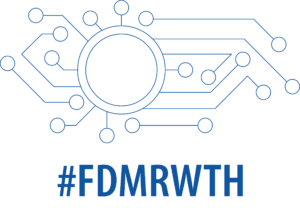
Source: Unsplash
In the RDM context and especially when it comes to publishing research data, one often hears and reads the term “repository”. This is used so naturally that newcomers often do not dare to ask what it is all about. So that you don’t have to click through the many different Google entries, we have summarised the most important information on the topic in our new blog post.
What is a Repository?
A research repository is a document server on which scientific material is stored and organised digitally, as permanently as possible, in order to ensure the findability and accessibility of the data.
How does a Repository work?
The data are transferred to the information structure by the data providing persons via a web-based user interface or the repository operators collect the data automatically via corresponding protocols and interfaces.
For re-use by third parties, metadata is required in addition to the actual data. Data submitters can take this data from other applications or add it manually.
Before being included in the repository, the data are often checked by curators with regard to their content and technical quality, and sometimes also with regard to legal aspects. This ensures that the data can be used by third parties in its present form.
Most repositories assign distinctive persistent identifiers so that the data can be permanently referenced and cited. The content of the repositories is indexed both via the persistent identifiers and via corresponding interfaces in search engines and subject databases. In addition, the repositories have a search function with which users can find the data they contain.
How do you choose a suitable Repository?
When choosing a suitable repository, one should primarily be guided by the conventions of the respective subject discipline or the specifications of the funding institutions. However, the decision also depends on whether the data are to be kept for a specific period of time (e.g. ten years) or archived for the long term.
If no specifications exist, subject-specific repositories should be considered as storage locations first. Directories such as re3data.org can facilitate the search for a suitable repository.
If no suitable subject repository exists for the research data, institutional repositories offered by universities and research institutions are a good option. RWTH Aachen University also offers an institutional repository, called RWTH Publications. But generic repositories, often provided by central institutions or non-profit organisations, can also be an option. (*)
Learn more
Please also read the instructions for publishing research data on RWTH Publications. If you have any questions about Research Data Management, feel free to write the ServiceDesk. The RDM team looks forward to hearing from you.
For more information on RDM, please visit the RWTH websites. (**)
______
Responsible for the content of this article is Sophia Nosthoff.





Leave a Reply
You must be logged in to post a comment.